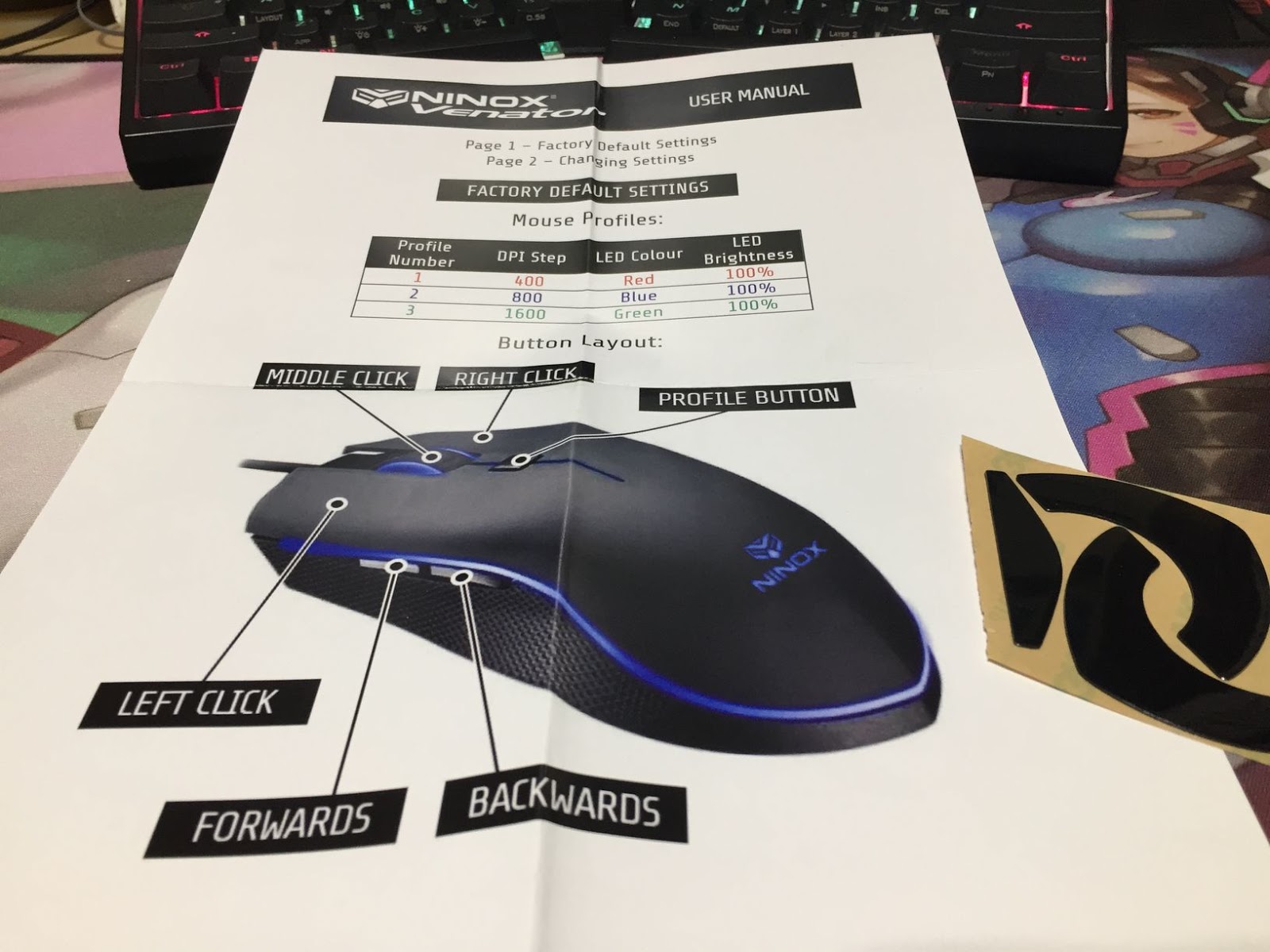

Hint: for gaming, you will never need more than 2000 DPI. Just set your mouse DPI to whatever you need it to be for gaming, and then adjust game and desktop sensitivity till it is comfortable. If you lower your desktop sens below 1, the additional DPI is serving no purpose.
Ninox venator windows#
The DPI will act as nothing more than a scaling factor, just like Windows sensitivity setting or your in-game sensitivity. I assume you have "Enhance pointer precision" disabled.Īt 1500 dpi, this will mean for 1mm of movement, you get 1500*0.75 / 25.4 (44) pixels of movement.Īt 1680 x 1050 resolution, that corresponds to 2.6 percent of your screen width.Īny modern mouse that isn't a turd will perform just as well at a lower DPI as at its maximum DPI. Windows sensitivity slider 5/11 is apparently a sens of 0.75 without acceleration. You realize that if I'm using 12,000 DPI with a sens of 1 (the lowest it could possibly be to make that DPI necessary), and I move my mouse by so much as 1mm, my cursor will move 472 pixels on the screen right? That's 12% of the width of your screen even at 4k resolution-for a 1mm mouse movement! The rest of the time, you are jumping big distances, and there isn't any reason for that to be a big movement of your mouse or to make it a small movement by using ridiculously high DPI that causes small cursor movements to be completely inaccurate. You only really need it to be linear at low speeds for detailed work. Even in FPS, there is no advantage, purely personal preference, but let's not go there. What is this magical benefit to using linear sens in a desktop environment? There's a reason acceleration is enabled by default on every popular desktop environment. Which is what you're suggesting, aren't you? my cursor control is fine.īut, youll have to ignore my argument here - because at the end of the day, i wasn't aware that a linear sensitivity of 1, in windows, infact represents an inch of cursor movement. Now, i have a greater experience and like i said. So my current experience is a quarter of what you are suggesting to be - thats assuming winSens 5 is actually winSens 2, based on your math.ġ680 / 7500dpi (times at least 5, for winsens 5) WinSens 5 should at least double my DPI, in terms of cursor distance, and create some near environment to your theory?ġ680 / 1500dpi (times at least 2, for winsens 5) With being at winSens 5, doesn't your reasoning mean that I would have difficulty? assuming a linear sens of 1 in windows is an-actual correlation to the math you've stated. I feel like i have no problem, moving pixel basis. I'm sat here now using a 1680 x 1050 res, at winSens: 5, 1500 dpi It's measurable with entirely lesser factors solid af.

I was purely saying, with 4k screens being affordable and 8k screens available. Yes, it is unfortunate that, at least, Windows control over sensitivity and acceleration parameters is so limited without hacks. And if you use a lower sensitivity than 1, the 12,000 DPI becomes unnecessary.Įven with a pretty standard DPI of 1800, you can traverse those screens in one inch of mouse movement with a high speed acceleration resulting in a sensitivity of about 4, while it can be less than 1 for slow, detailed movements. If you're suggesting using a linear sensitivity of 1 so that you can traverse those two screens horizontally in 7,680 / 12,000 inches, then you're going to have to move your mouse 1 / 12,000th of an inch if you want to move one pixel (say doing graphic work or whatever). The reason is obvious: while it makes traversing the large distance easy, you lose fine grained control when you want to move slowly. If you did have two 4k screens and wanted to traverse them easily, using a linear sensitivity would be quite stupid imo. I'm guessing the main market for mice such as these is the gamer market, not necessarily desktop users with two 4k screens.


 0 kommentar(er)
0 kommentar(er)
